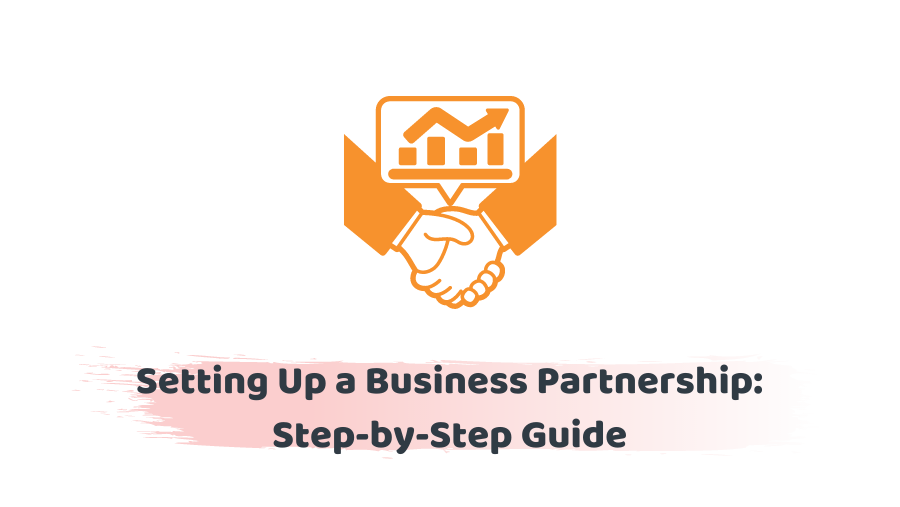If two or more people want to own and run a business without forming a limited company, setting up a business partnership can be an ideal choice. Alike sole proprietorship, a partnership business is one of the simplest business structures to form. In this structure, each partner participates independently in day-to-day business activities and is responsible for the debts and liabilities of the business. Today, we’ll discuss the steps involved in setting up a general partnership. Let’s dive in!
Ready to set up partnership business? Speak to one of our qualified accountants. Give us a call on 0203 4411 258 or request a callback to know your options for partnership business!
Setting Up a Business Partnership
In a general partnership, the partners share the business’s profit and its responsibilities. Typically, these are:
- bearing the business loss
- paying bills for the purchases made for business, e.g. stock or equipment
Each partner is liable to pay due taxes on the profit earned from the share. Bear in mind that a partner doesn’t always need to be a real person, it can also be an entity like a limited company.
Here are the steps involved in setting up a partnership:
1) Choose Business Partners and Business Name
The first step while forming a partnership business is to choose like-minded people who are reliable and prepared to work with you as partners. According to the Partnership Act 1890, the number of partners allowed in partnership business is up to 20. Partners are responsible for the debts and liabilities incurred. Therefore, you need to be careful while choosing business partners. And, you also need to sign a partnership agreement which we’ll discuss below in this post.
Naming your partnership business is a crucial task that will represent your business to the world. Here you can start your business with your own name or choose the name of your partner. Registering your name is not important. Here, you have the choice to choose your own name and the name of your business on the official paperwork used, like letters or invoices.
Note that you don’t need to use such a name for the business:
- where limited, Ltd, limited liability partnership, LLP, public limited company or plc is used
- that is deemed offensive
- that is the same as an existing trademark
- containing sensitive words or expressions
- that suggests a connection with government or local authorities (unless you are permitted)
If you want to stop people from using your name for trading, you need to register it as a trademark.
2) Prepare a Partnership Agreement
Although a partnership agreement is not a legal requirement however, it is highly recommended to avoid disputes. It sets out all the terms and conditions on which a partnership business will operate. You need to include the following details into your partnership agreements:
- how profits and costs will be distributed
- who will be the nominated partner?
- restrictions on partners to avoid conflicts
- what happens if the partnership is dissolved?
- Any other important business arrangements between the partners
3) Register Partnership with the HMRC
The nominated partner of the partnership must register for Self-Assessment with HMRC. It means you are liable to send the tax return of the partnership. In addition, partners also need to register and need to send their own tax returns as self-employed. You need to register by 5th October in the second year of your business otherwise, you may be charged with a penalty.
If you are not able to register for partnership online, you can do it via form SA400. Additionally, you can register as a partner with the form SA401.
The partnership business also needs to register for VAT, if its VAT taxable turnover is over £85,000. You may choose to register for VAT voluntarily to reclaim VAT on business supplies.
Want to Register for VAT? Contact Accotax now for VAT registration!
Alike a limited company, the partnership business doesn’t need to notify Companies House, nor do they have many administrative or accounting responsibilities to deal with.
Quick Sum Up
So, setting up a business partnership is a much easier and straightforward process than forming a limited company. With fewer legal requirements and responsibilities, many people prefer to form a partnership business. Just choose partners and business names, sign a partnership agreement (not mandatory) and register your business with HMRC. That’s all about setting up a partnership business.
Have a query? Speak to our qualified accountant! Give us a call on 02034411258 or request a callback.
Save your time, money, and stress by allowing us to manage your accounts and taxes. Accotax has a team of accountants and tax experts to save your pennies against unwanted taxes. Contact us right now!
Disclaimer: This post is just written for informational purposes only and should not be taken as expert advice.






















































